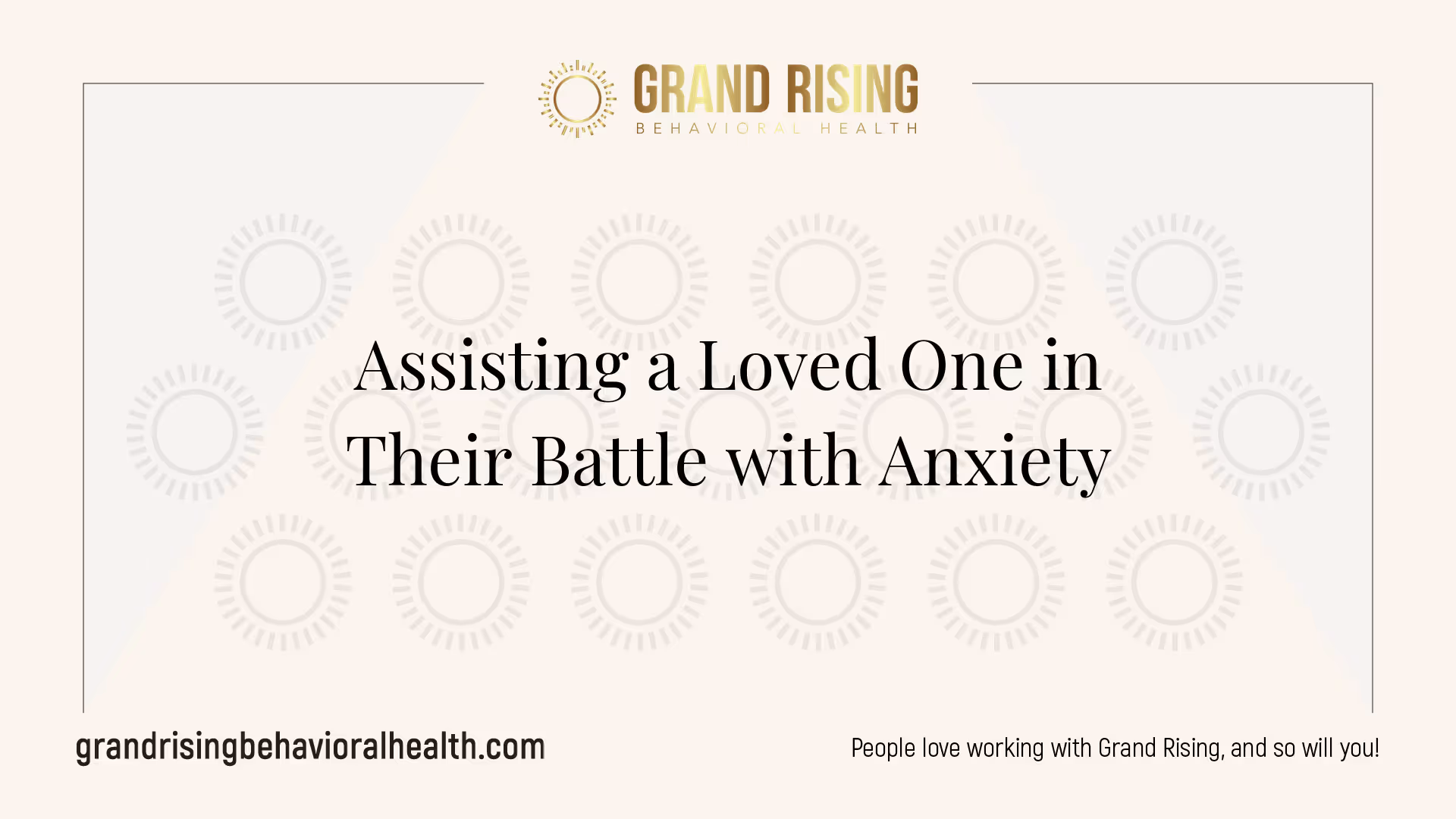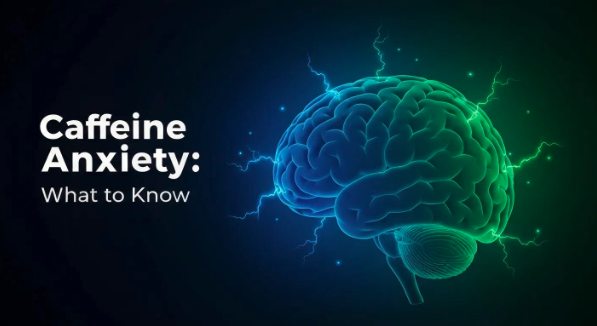Assisting a Loved One in Their Battle with Anxiety
Discover effective ways of supporting a loved one with anxiety and help them find peace and strength.

Creating a Supportive Environment
Creating a nurturing atmosphere is essential when supporting a loved one who is dealing with anxiety. Individuals with anxiety need a safe space where they can express themselves and feel understood.

Establishing a Safe Home
Having a secure, stable, and healthy home is the foundation for fostering good mental health. This environment can significantly contribute to supporting a loved one with anxiety. It allows them to feel at ease and reduces the chances of triggering overwhelming emotions. Ensuring that the home is calm, organized, and free of unnecessary stressors is vital. Engaging in activities together, such as relaxation exercises to combat anxiety or other relaxing routines, can also help create a peaceful home environment.
Seeking Help for Mental Wellness
When symptoms of anxiety arise, seeking help promptly can prevent these issues from escalating and disrupting daily life. Anxiety disorders are prevalent, affecting approximately 18% of individuals in the U.S. It is important to note that women and people assigned female at birth are about twice as likely to experience anxiety disorders compared to men and people assigned male at birth [2].
Recognizing the signs of anxiety in a loved one is crucial. Prioritizing their mental wellness means encouraging them to seek professional help when necessary. This step can significantly lessen the impact of anxiety on their life. Support from family and friends is essential; it is important to offer patience and avoid pressuring them into situations that may cause distress. Taking things at a comfortable pace is beneficial for their mental health [3].
For those looking to support a loved one further, exploring topics like managing chronic worry and identifying anxiety triggers can be useful. Implementing these strategies can create a supportive environment that fosters healing and understanding.

Understanding Panic Attacks
Panic attacks can be overwhelming experiences, marked by intense fear responses. It is crucial to understand what panic attacks involve and how to better support someone experiencing them.
Intense Fear Responses
Panic attacks are characterized by brief but intense surges of fear. They involve symptoms that mimic those faced during true emergencies, such as a racing heart, shortness of breath, and a sense of imminent danger. These episodes can be incredibly distressing, making individuals believe they are experiencing life-threatening situations, such as a heart attack. Notably, panic attacks can occur unexpectedly, sometimes even during calm moments or while sleeping. This unpredictability complicates the experience and helps to generate anxiety regarding potential future attacks.
Panic attacks are distinct from typical fear responses since there is no real threat present. The person may feel trapped in a cycle of irrational fear, leading them to avoid specific situations in an effort to escape the anxiety. This avoidance can exacerbate the problem, as being unable to confront the triggers leads to heightened anxiety over time.
Panic Attack SymptomsDescriptionRacing HeartA rapid heartbeat that can feel overwhelmingShortness of BreathFeelings of suffocation or inability to get airChest PainDiscomfort that may mimic heart-related issuesDizziness or LightheadednessFeeling faint or unsteady on one's feetNauseaUpset stomach or feelings of sicknessTingling or NumbnessSensations in the hands, feet, or other body parts
Avoiding Triggers
Identifying and managing triggers for panic attacks is critical in supporting a loved one. Triggers are specific situations or stimuli that can lead to an attack. These can vary significantly from person to person. Some common triggers could include stressful environments, public speaking, or specific phobias [4].
It is beneficial to encourage those struggling with anxiety to recognize their personal triggers. This identification helps in developing coping strategies and reducing the likelihood of future attacks. For example, if crowded places are a trigger, they might opt for quieter locations or gradually expose themselves to busier environments in a controlled manner.
Moreover, conversations about anxiety triggers: identifying and managing them can be supportive. Creating a safe space for discussing these triggers allows for better understanding and planning. Additionally, bringing awareness to calming techniques for anxious moments can empower individuals to manage their responses more effectively.
Ensuring a supportive atmosphere where open discussions can occur is vital. Encouraging individuals to seek professional help can further aid them in their journey towards feeling supported in their experiences with anxiety. Remember, patience and understanding from loved ones can make a significant difference in coping with panic attacks and fostering recovery.

Coping with Panic Attacks
Supporting a loved one during a panic attack involves knowing effective techniques to help them cope and providing the right support afterward. Here, we focus on grounding techniques and post-attack support methods.
Grounding Techniques
Grounding techniques are effective strategies that help individuals contain panic attacks after they have begun. These techniques enable the person to focus on reality and divert their attention from their fear response. Some common grounding techniques include:
TechniqueDescription5-4-3-2-1 MethodIdentify 5 things you can see, 4 things you can touch, 3 things you can hear, 2 things you can smell, and 1 thing you can taste.Deep BreathingTake slow, deep breaths; inhale for a count of four, hold for four, and exhale for four.Physical ObjectsEncourage the person to hold a comforting object or texture.VisualizationImagine a safe and calming place.
These techniques should be introduced when the intensity of the attack has decreased, allowing the person to re-establish a sense of safety.
It's essential to avoid outdated methods, such as encouraging someone to breathe into a paper bag, which may not be safe. Instead, let them know that the panic will pass. Being kind and non-judgmental creates a supportive environment during a difficult time [5].
Post-Attack Support
Once the panic attack has subsided, providing appropriate post-attack support is crucial. Here are some strategies that can help in this phase:
By implementing grounding techniques during a panic attack and providing thoughtful support afterward, one can significantly aid a loved one in managing their anxiety. For further insights into managing chronic worry, explore our guide on managing chronic worry.
Anxiety Disorders Overview
Understanding anxiety disorders is essential for supporting a loved one with anxiety. These conditions can significantly affect daily life and relationships.
Symptoms and Prevalence
Anxiety disorders manifest as persistent feelings of fear, dread, and apprehension that are out of proportion to the actual situation. These symptoms can cause disruptions in everyday activities. Women are about twice as likely as men to experience an anxiety disorder Cleveland Clinic. Below is a summary of common symptoms and prevalence rates related to anxiety disorders.
SymptomDescriptionExcessive WorryConstantly worrying about everyday issuesRestlessnessFeeling on edge or unable to relaxFatigueUnexplained tiredness or loss of energyDifficulty ConcentratingTrouble focusing on tasks or decision-makingSleep DisturbancesTrouble falling or staying asleep
Anxiety disorders are common across various age groups, affecting children, adolescents, and adults. Early intervention can significantly reduce the impact of these disorders on daily life Cleveland Clinic.
Effective Treatments
Treatment options for anxiety disorders typically include medication and psychotherapy. Here’s a brief overview of common approaches:
Treatment TypeDescriptionMedicationIncludes options like antidepressants, benzodiazepines, and buspirone Cleveland Clinic. Each has its own benefits and potential side effects, and a healthcare professional can help determine the best option.PsychotherapyAims to identify and modify unhealthy thoughts and emotions. Techniques such as cognitive-behavioral therapy (CBT) and exposure therapy are often employed to help individuals manage their anxiety Cleveland Clinic.Family TherapyInvolves family members in sessions with trained professionals to improve relationships and dynamics, contributing to overall well-being Cleveland Clinic.
These treatments can significantly help those struggling with anxiety disorders. Their effectiveness can vary based on individual needs and circumstances, highlighting the importance of personalized care and continuous support from family and friends. For further insights on managing anxiety, explore our resources on managing chronic worry, calming techniques for anxious moments, and the connection between diet and anxiety levels.
Treatment Options
When supporting a loved one with anxiety, understanding the available treatment options is essential. Two primary approaches to managing anxiety disorders are medication and therapy.
Medication and Therapy
Medication and psychotherapy are common treatments for anxiety disorders. Medications may include antidepressants, benzodiazepines, and buspirone. Each type of medication can target different symptoms and is often prescribed based on individual needs.
Type of MedicationCommon UseAntidepressantsTreat long-term anxiety by regulating neurotransmittersBenzodiazepinesProvide short-term relief from acute anxiety symptomsBuspironeAllows for anxiety treatment without the sedative effects of benzodiazepines
Psychotherapy aims to help individuals identify and change unhealthy emotions, thoughts, and behaviors. Common approaches include cognitive-behavioral therapy (CBT) and exposure therapy. These therapies can help individuals develop coping strategies to manage anxiety triggers effectively, leading to a better quality of life. Engaging in both medication and therapy may yield the best results for those experiencing anxiety disorders.
Family Therapy Benefits
Family therapy can also be beneficial for treating anxiety disorders. This approach involves multiple family members and is conducted by trained mental health professionals who specialize in family dynamics [6]. Involving the family can create a more supportive environment for the individual battling anxiety.
The effectiveness of family therapy extends beyond treating a specific anxiety issue; it improves overall family functioning as well. Benefits include:
Research has demonstrated that family therapy can improve mental health conditions and facilitate better functioning at work or school for individuals involved [6]. When supporting a loved one with anxiety, considering all treatment options helps create a comprehensive approach to their care and well-being.
Supporting a Loved One
When assisting someone dealing with anxiety, the approach requires sensitivity and strategy. It is essential to understand how to effectively respond to their needs and the importance of encouraging professional help.
Responding to Anxiety Needs
Supporting someone with anxiety involves recognizing their specific needs during moments of distress. Each individual may experience anxiety differently, and understanding common reactions can facilitate better support. Panic attacks, for instance, can arise unexpectedly, even during moments of calm or sleep [4]. Hence, it is crucial to respond compassionately and calmly.
Practicing grounding techniques can help an individual cope during a panic attack. These techniques assist in focusing on reality and can be beneficial once the intensity of the attack subsides [4]. Being a calm presence can also encourage them to express their feelings and may help reduce embarrassment or shame associated with their experience.
When responding to someone in distress, consider these approaches:
Encouraging Professional Help
It may become necessary to prompt a loved one to seek professional help, particularly if their anxiety seems unmanageable. Encouragement should be gentle and supportive. Engaging in open conversations about their feelings and the benefits of seeking help can significantly impact their willingness to pursue treatment.
It is crucial to remain patient, as some individuals may resist the suggestion of professional help. Understanding their reasons for hesitation is important, as pushing too hard can lead to defensive responses. It is advisable to avoid insisting unless safety is a concern. In cases where a person may be at risk of harming themselves or others, immediate action is necessary to secure their safety [7].
Here are some tips for encouraging professional support:
Supporting a loved one through their anxiety journey requires understanding, patience, and sometimes a gentle nudge toward professional resources. Your presence and encouragement can make a significant difference in their path to managing anxiety effectively.
References
[2]:
[3]:
[4]:
[5]:
[6]:
[7]:
[8]:
More Resources
A team ready to start your journey.
Get in touch — today.
We are a safe space – a haven for exceptional individuals to receive discreet, personalized, in-person treatment and care.
.avif)



.webp)






